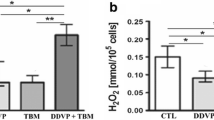Abstract
Irritant diterpene ester toxins were isolated from Euphorbia nubica and E. helioscopia, which are contaminants of the green fodder of livestock in Egypt. Fractionations of methanol extracts of aerial parts of both plants were monitored by the irritation unit on the mouse ear. Plant extracts were subjected to multiplicative distribution methods, yielding irritant hydrophilic fractions that were further purified by column chromatography. Final purification of the materials was achieved by TLC (silica gel) followed by HPLC, or by TLC alone. In this way, from E. nubica, five Euphorbia factors (Nu1–Nu5) were isolated and characterized as short-chain polyfunctional diterpene esters of tigliane-type parent alcohols. The two weak irritants Nu1 and Nu3 were triesters of 4-deoxy(4α)phorbol. Nu2 was shown to be a triester of the stereoisomeric tigliane-type parent alcohol 4-deoxyphorbol. Weak irritant Nu4 probably is a positional isomer of Nu2. Nu5 was characterized as a short-chain triester of 4,20-dideoxy-5ξ-hydroxyphorbol. From E. helioscopia, six short- to medium-chain polyfunctional diterpene esters of the ingenane type, generally containing unsaturated acids were obtained, i.e., four irritant esters of ingenol (Euphorbia factors H1, H2, H5, and H6) and two esters of 20-deoxyingenol (non-irritant Euphorbia substance HS4, and irritant Euphorbia factor H8). All irritant Euphorbia factors of the tigliane and ingenane diterpene ester type described in this investigation are considered to be more or less active tumor promoters, i.e., conditional (non-genotoxic) cancerogens. The Euphorbia factors assayed exhibited moderate (H1) to low (H8) relative tumor-promoting potency in comparison to the ingenane prototype DTE tumor promoter 3-TI.
Similar content being viewed by others
Author information
Authors and Affiliations
Additional information
Received: 25 July 2000 / Accepted: 18 September 2000
Rights and permissions
About this article
Cite this article
D. Zayed, S., Farghaly, M., Soliman, S. et al. Dietary cancer risk from conditional cancerogens (tumor promoters) in produce of livestock fed on species of spurge (Euphorbiaceae) . J Cancer Res Clin Oncol 127, 40–47 (2001). https://doi.org/10.1007/s004320000214
Issue Date:
DOI: https://doi.org/10.1007/s004320000214




